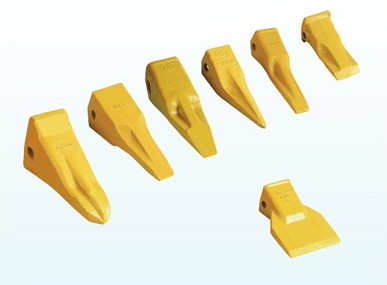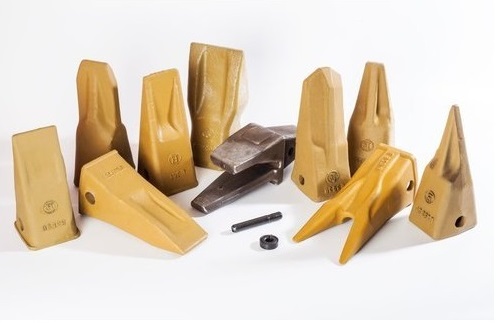 HuiTong
HuiTong  2025-06-13
2025-06-13
Excavator bucket teeth are the terminal of the working device of excavators. In the process of excavation operations, the bucket teeth are the work components with the largest load and belong to the consumable parts. Especially in the stone construction environment, the bucket teeth wear very fast. The use of bucket teeth is good or bad, in fact, it can directly affect the work efficiency and production cost of the excavator.

01. Choose the right tooth type
The excavator bucket teeth depend on the working environment during the use process to determine the specific type of bucket teeth. Generally, flat-head bucket teeth are used for soil excavation, weathered sand, and surface coal. RC type bucket teeth are used for digging massive hard rock, and TL type bucket teeth are generally used for digging massive coal seams. TL bucket teeth can increase the rate of coal lump production. In actual use, users often like general-purpose RC type bucket teeth. It is recommended not to use RC type bucket teeth under special circumstances. It is best to use flat-head bucket teeth, because RC type bucket teeth will increase like a "fist" after being worn out for a period of time. This reduces the digging resistance and wastes power, while the flat-mouth bucket teeth always maintain a sharp surface during the wear process, which reduces digging resistance and saves fuel.
02. Replace bucket teeth in time
When the tip part of the excavator bucket teeth wears severely, the force required by the excavator to cut in during the excavation operation will inevitably be greatly increased, resulting in greater fuel consumption and affecting work efficiency. Therefore, it is very necessary to replace the new bucket teeth in time when the wear of the bucket teeth is relatively serious.

03. Replace the tooth seat in time
The wear of the tooth seat is also very important to the service life of the excavator bucket teeth of the excavator. It is recommended to replace the tooth seat after the tooth seat is worn out by 10%-15%, because there is a relatively large amount of wear between the tooth seat and the bucket tooth. The large gap changes the fit and stress point of the bucket tooth and the tooth seat, and the bucket tooth breaks due to the change of the force point.